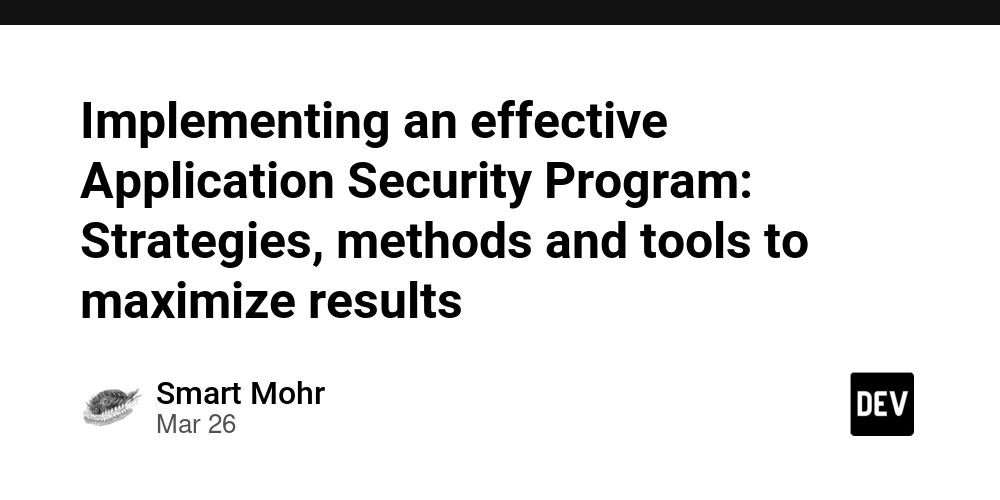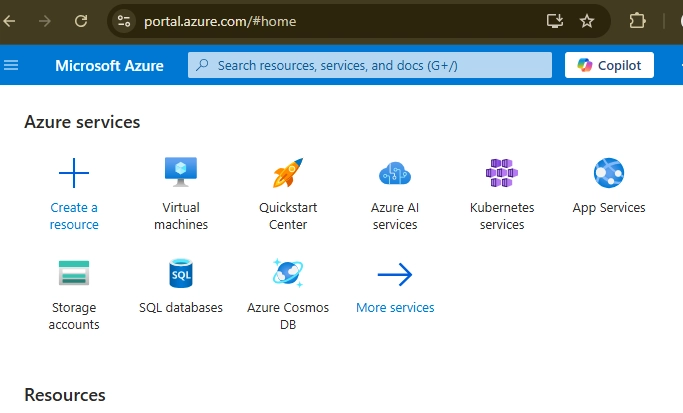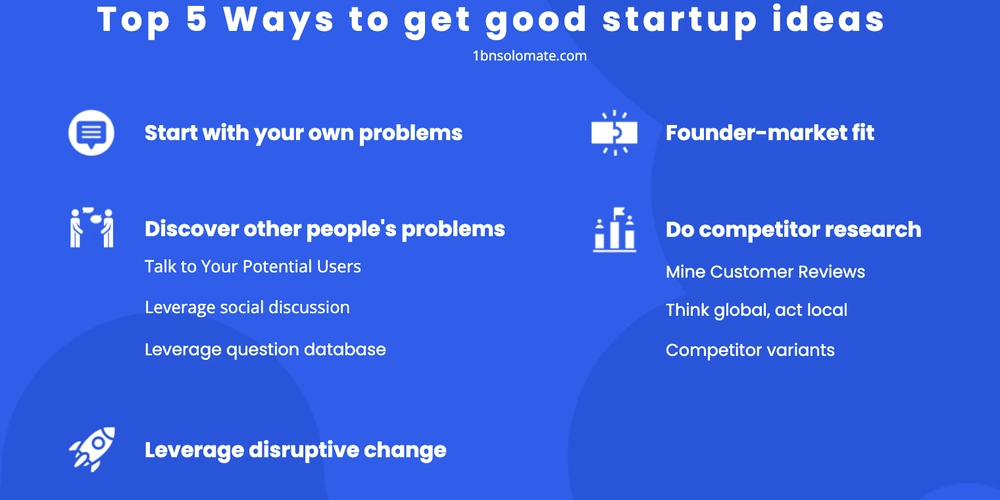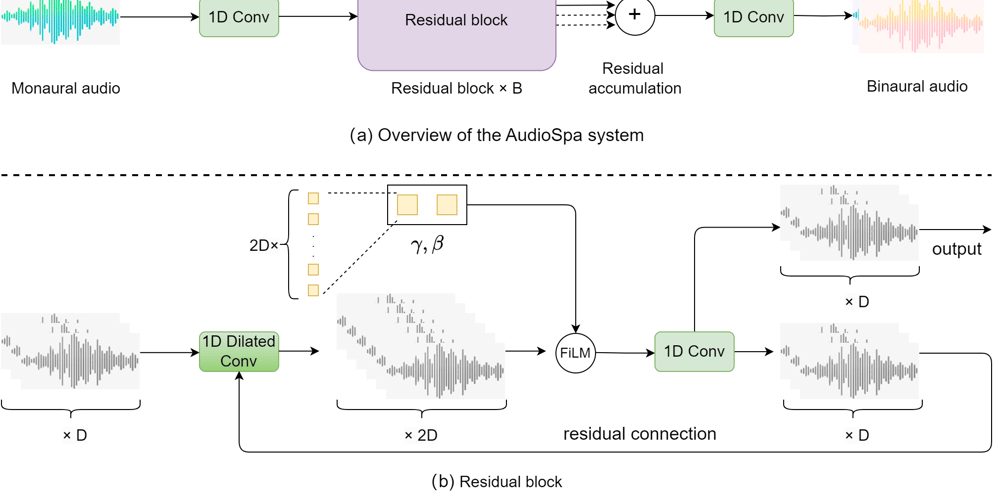Implementing an effective Application Security Program: Strategies, methods and tools to maximize results
The complexity of contemporary software development necessitates a comprehensive, multifaceted approach to application security (AppSec) which goes beyond mere vulnerability scanning and remediation. The ever-evolving threat landscape, coupled with the rapid pace of technology advancements and the increasing intricacy of software architectures, calls for a holistic, proactive strategy that seamlessly integrates security into each phase of the development lifecycle. This comprehensive guide delves into the key components, best practices, and the latest technologies that make up the highly efficient AppSec program, which allows companies to protect their software assets, mitigate risk, and create the culture of security-first development. At the heart of the success of an AppSec program lies an important shift in perspective, one that recognizes security as an integral aspect of the process of development rather than a secondary or separate undertaking. This paradigm shift requires an intensive collaboration between security teams operators, developers, and personnel, breaking down the silos and fostering a shared conviction for the security of the applications they create, deploy and manage. DevSecOps allows organizations to integrate security into their development processes. This will ensure that security is considered at all stages beginning with ideation, development, and deployment through to the ongoing maintenance. The key to this approach is the formulation of clear security guidelines standards, guidelines, and standards that establish a framework for secure coding practices threat modeling, and vulnerability management. These policies should be based on industry best practices such as the OWASP top 10 list, NIST guidelines, and the CWE. They should be able to take into account the distinct requirements and risk specific to an organization's application and business context. By creating these policies in a way that makes them accessible to all interested parties, organizations are able to ensure a uniform, secure approach across all applications. It is important to fund security training and education programs that will assist in the implementation of these guidelines. These programs must equip developers with knowledge and skills to write secure code and identify weaknesses and follow best practices for security throughout the process of development. Training should cover a range of areas, including secure programming and the most common attacks, as well as threat modeling and principles of secure architectural design. Companies can create a strong foundation for AppSec by encouraging an environment that promotes continual learning and providing developers with the resources and tools they require to integrate security into their work. In addition organizations should also set up secure security testing and verification procedures to detect and fix weaknesses before they are exploited by criminals. This is a multi-layered process which includes both static and dynamic analysis methods along with manual penetration testing and code reviews. Early in the development cycle Static Application Security Testing tools (SAST) can be used to discover vulnerabilities like SQL Injection, Cross-SiteScripting (XSS) and buffer overflows. Dynamic Application Security Testing (DAST) tools are, however, can be used to simulate attacks on running applications, identifying vulnerabilities that might not be detected using static analysis on its own. While these automated testing tools are necessary to identify potential vulnerabilities at scale, they are not an all-purpose solution. manual penetration testing performed by security experts is crucial to uncovering complex business logic-related weaknesses that automated tools may miss. Combining automated testing and manual validation allows organizations to have a thorough understanding of the application security posture. They can also determine the best way to prioritize remediation strategies based on the level of vulnerability and the impact it has on. Businesses should take advantage of the latest technologies like artificial intelligence and machine learning to improve their capabilities in security testing and vulnerability assessment. how to use ai in appsec AI-powered tools can examine huge amounts of code and data, identifying patterns as well as anomalies that could be a sign of security vulnerabilities. They can also enhance their detection and prevention of emerging threats by learning from previous vulnerabilities and attack patterns. A particularly exciting application of AI in AppSec is using code property graphs (CPGs) to provide greater accuracy and efficiency in vulnerability detection and remediation. ai in appsec CPGs are an extensive representation of an application's codebase that captures not only its syntactic structure, but additionally complex dependencies and relationships between components. By harnessing the power of CPGs AI

The complexity of contemporary software development necessitates a comprehensive, multifaceted approach to application security (AppSec) which goes beyond mere vulnerability scanning and remediation. The ever-evolving threat landscape, coupled with the rapid pace of technology advancements and the increasing intricacy of software architectures, calls for a holistic, proactive strategy that seamlessly integrates security into each phase of the development lifecycle. This comprehensive guide delves into the key components, best practices, and the latest technologies that make up the highly efficient AppSec program, which allows companies to protect their software assets, mitigate risk, and create the culture of security-first development.
At the heart of the success of an AppSec program lies an important shift in perspective, one that recognizes security as an integral aspect of the process of development rather than a secondary or separate undertaking. This paradigm shift requires an intensive collaboration between security teams operators, developers, and personnel, breaking down the silos and fostering a shared conviction for the security of the applications they create, deploy and manage. DevSecOps allows organizations to integrate security into their development processes. This will ensure that security is considered at all stages beginning with ideation, development, and deployment through to the ongoing maintenance.
The key to this approach is the formulation of clear security guidelines standards, guidelines, and standards that establish a framework for secure coding practices threat modeling, and vulnerability management. These policies should be based on industry best practices such as the OWASP top 10 list, NIST guidelines, and the CWE. They should be able to take into account the distinct requirements and risk specific to an organization's application and business context. By creating these policies in a way that makes them accessible to all interested parties, organizations are able to ensure a uniform, secure approach across all applications.
It is important to fund security training and education programs that will assist in the implementation of these guidelines. These programs must equip developers with knowledge and skills to write secure code and identify weaknesses and follow best practices for security throughout the process of development. Training should cover a range of areas, including secure programming and the most common attacks, as well as threat modeling and principles of secure architectural design. Companies can create a strong foundation for AppSec by encouraging an environment that promotes continual learning and providing developers with the resources and tools they require to integrate security into their work.
In addition organizations should also set up secure security testing and verification procedures to detect and fix weaknesses before they are exploited by criminals. This is a multi-layered process which includes both static and dynamic analysis methods along with manual penetration testing and code reviews. Early in the development cycle Static Application Security Testing tools (SAST) can be used to discover vulnerabilities like SQL Injection, Cross-SiteScripting (XSS) and buffer overflows. Dynamic Application Security Testing (DAST) tools are, however, can be used to simulate attacks on running applications, identifying vulnerabilities that might not be detected using static analysis on its own.
While these automated testing tools are necessary to identify potential vulnerabilities at scale, they are not an all-purpose solution. manual penetration testing performed by security experts is crucial to uncovering complex business logic-related weaknesses that automated tools may miss. Combining automated testing and manual validation allows organizations to have a thorough understanding of the application security posture. They can also determine the best way to prioritize remediation strategies based on the level of vulnerability and the impact it has on.
Businesses should take advantage of the latest technologies like artificial intelligence and machine learning to improve their capabilities in security testing and vulnerability assessment. how to use ai in appsec AI-powered tools can examine huge amounts of code and data, identifying patterns as well as anomalies that could be a sign of security vulnerabilities. They can also enhance their detection and prevention of emerging threats by learning from previous vulnerabilities and attack patterns.
A particularly exciting application of AI in AppSec is using code property graphs (CPGs) to provide greater accuracy and efficiency in vulnerability detection and remediation. ai in appsec CPGs are an extensive representation of an application's codebase that captures not only its syntactic structure, but additionally complex dependencies and relationships between components. By harnessing the power of CPGs AI-driven tools are able to conduct a deep, contextual analysis of an application's security profile and identify vulnerabilities that could be overlooked by static analysis methods.
Moreover, CPGs can enable automated vulnerability remediation by making use of AI-powered repair and code transformation. AI algorithms can produce targeted, contextual solutions by analyzing the semantic structure and nature of identified vulnerabilities. This permits them to tackle the root causes of an problem, instead of treating its symptoms. autonomous AI This approach not only accelerates the process of remediation but also decreases the possibility of introducing new vulnerabilities or breaking existing functionality.
Another key aspect of an effective AppSec program is the incorporation of security testing and validation into the continuous integration and continuous deployment (CI/CD) pipeline. Automating security checks, and integrating them into the build-and-deployment process allows companies to identify vulnerabilities early on and prevent them from reaching production environments. The shift-left approach to security permits quicker feedback loops, and also reduces the time and effort needed to identify and fix issues.
To reach this level of integration enterprises must invest in proper infrastructure and tools to enable their AppSec program. Not only should these tools be used to conduct security tests, but also the frameworks and platforms that allow integration and automation. Containerization technologies such as Docker and Kubernetes play an important role in this regard, because they offer a reliable and consistent setting for testing security as well as isolating vulnerable components.
Alongside the technical tools effective tools for communication and collaboration are crucial to fostering an environment of security and enable teams from different functions to collaborate effectively. Issue tracking tools such as Jira or GitLab will help teams focus on and manage the risks, while chat and messaging tools such as Slack or Microsoft Teams can facilitate real-time exchange of information and communication between security professionals as well as development teams.
The achievement of an AppSec program isn't just dependent on the software and tools used however, it is also dependent on the people who are behind it. A strong, secure culture requires the support of leaders as well as clear communication and a commitment to continuous improvement. Organizations can foster an environment that makes security not just a checkbox to check, but rather an integral aspect of growth through fostering a shared sense of accountability engaging in dialogue and collaboration, providing resources and support and creating a culture where security is a shared responsibility.
For their AppSec programs to remain effective over the long term organisations must develop relevant metrics and key performance indicators (KPIs). These KPIs will allow them to track their progress and pinpoint improvement areas. These metrics should encompass the entire lifecycle of an application that includes everything from the number of vulnerabilities discovered during the development phase, to the time it takes to correct the problems and the overall security posture of production applications. These metrics can be used to demonstrate the benefits of AppSec investment, identify patterns and trends and aid organizations in making decision-based decisions based on data on where to focus on their efforts.
Moreover, organizations must engage in continual education and training activities to keep up with the constantly evolving threat landscape as well as emerging best methods. Participating in industry conferences or online courses, or working with security experts and researchers from the outside will help you stay current on the newest trends. In fostering a culture that encourages continuing learning, organizations will ensure that their AppSec program is able to adapt and resilient in the face of new challenges and threats.
It is vital to remember that app security is a continual process that requires constant commitment and investment. As new technology emerges and development practices evolve organisations must continuously review and update their AppSec strategies to ensure that they remain effective and aligned with their goals for business. By embracing a continuous improvement mindset, promoting collaboration and communication, and making use of advanced technologies like CPGs and AI companies can develop an efficient and flexible AppSec program that can not just protect their software assets but also let them innovate in an increasingly challenging digital world.ai in appsec













































































































































































![[The AI Show Episode 142]: ChatGPT’s New Image Generator, Studio Ghibli Craze and Backlash, Gemini 2.5, OpenAI Academy, 4o Updates, Vibe Marketing & xAI Acquires X](https://www.marketingaiinstitute.com/hubfs/ep%20142%20cover.png)


























































































































![[FREE EBOOKS] The Kubernetes Bible, The Ultimate Linux Shell Scripting Guide & Four More Best Selling Titles](https://www.javacodegeeks.com/wp-content/uploads/2012/12/jcg-logo.jpg)



![From drop-out to software architect with Jason Lengstorf [Podcast #167]](https://cdn.hashnode.com/res/hashnode/image/upload/v1743796461357/f3d19cd7-e6f5-4d7c-8bfc-eb974bc8da68.png?#)






































































































.png?#)





.jpg?#)































_Christophe_Coat_Alamy.jpg?#)








































































































![Rapidus in Talks With Apple as It Accelerates Toward 2nm Chip Production [Report]](https://www.iclarified.com/images/news/96937/96937/96937-640.jpg)







































































































































